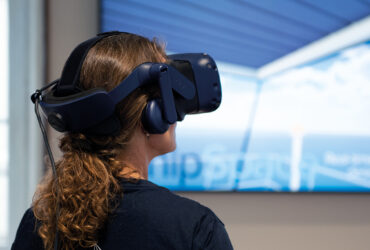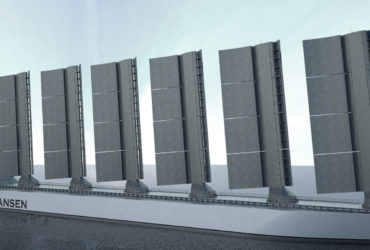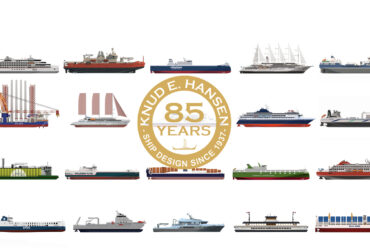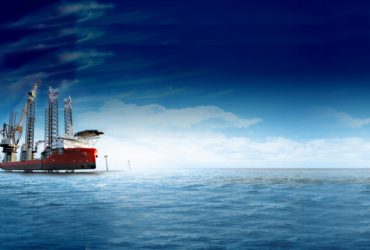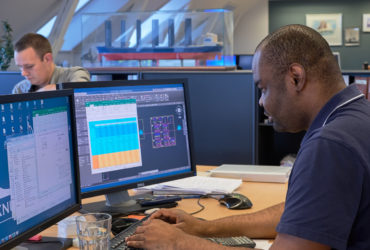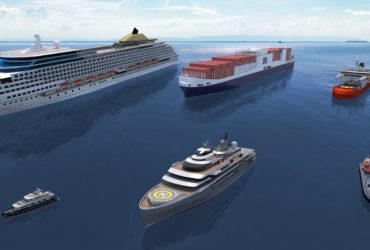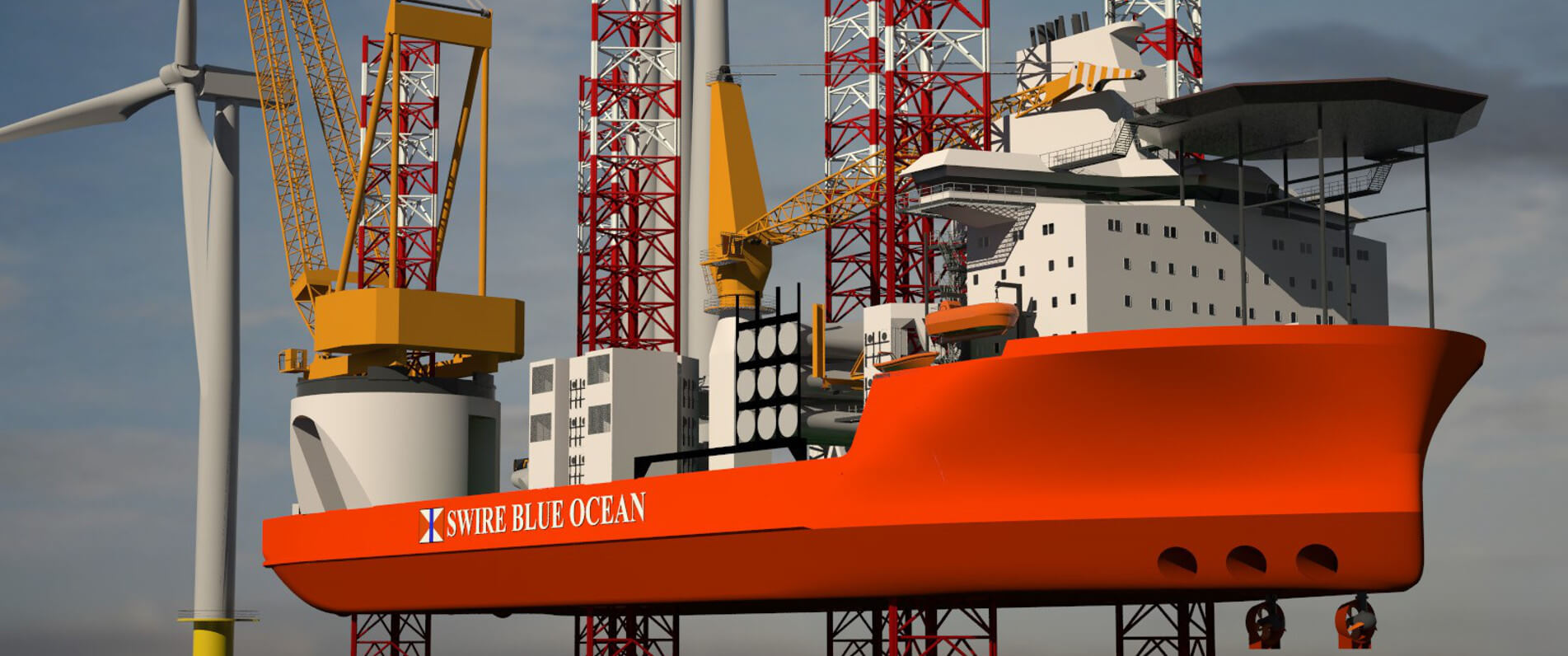04 August 2012
There is a place for reducing the cost of offshore wind in the future, states naval architecture company KNUD E. HANSEN from Denmark
Article from Offshore Center Danmar by Russel James Brice
The Danish naval architecture and engineering company KNUD E. HANSEN has developed several special vessels for the offshore industry.
Offshore wind has been widely accepted as a viable means to harvest wind energy. The industry is now a developed market, where we see current and future projects with installation following quite similar practices. Will this situation lead to more economic project in the future? Is it also likely that offshore wind farm maintenance will be able to do the same?
Considering the current size of turbines the number of installations for an offshore wind farm is quite high. It is normal now to see 80-180 foundations. In good weather and optimized installation it is possible to install 1-2 foundations and 1-2 turbines per day. Depending on the installation method used, choice of vessel, logistic arrangement to supply port, it may be possible to feed the installation vessel offshore, and make full use of the available weather.
For most locations, operational weather limits relate to an installation opportunity of about 50%, depending on the site of course. If these rates are to increase, something in the current system needs to change. What is it that gives these limits and what can be done to improve the workability of the installation system?
Solutions available to implement
The cost of installation, other than the outright cost of foundations and turbines, is chiefly within the installation timeframe. The day rate cost of installation is generally fixed if the system is operational or sitting idle waiting for weather windows, so the key factors are:
- Vessels that can operate in higher sea states
- Work practices that allow safe operations in higher wind strength
- Supply chain logistic that is robust.
There are solutions available to implement. Much of these solutions are affected via installation procedure design, while others concern the strategic use of advanced engineering techniques to validate safety measures, procedures and vessel operations.
Improving installation time
The Danish naval architecture and engineering company KNUD E. HANSEN has developed dedicated vessels from the beginning of the offshore wind growth (Vroon-Resolution) and also the most recent additions to the fleet, Swire Blue Ocean-Pacific Orca.
Additional to installation vessel designs, KNUD E. HANSEN is active in the design & management of installation procedures, supporting engineering & documentation for installation & transport projects. It is in this area where the possibilities to improve installation time and raise the operational weather criteria are most readily obtainable.
KNUD E. HANSEN has commenced development of a specific project logistic and installation program, whereby comparisons of projects can be made quickly and accurately. The decision makers are provided with results in short time frames for comparing project set up, vessel and port selections for specific sites. This will also allow for back analysis of completed projects, identifying where the savings may have been possible, and the risk associated with them.
Important elements
Allocating the adequate time and resources into exploring various operational methods and objectively evaluating the likelihood of success is imperative.
There are some important elements, which must be present to facilitate this:
- Project leaders with proven experience in offshore wind projects & installation system design
- Possessing the right design tools matched with engineers the correct experienced to drive them
- Maintaining a direct dialogue with:
– Client or project developer
– Maine warrantee surveyor, both the subcontractors own and the clients
– Relevant national authorities, classification societies etc…
It is in this capacity that utilizing a consultant such as KNUD E. HANSEN, future projects have the possibility to become; cheaper, safer and optimize the use of plant and equipment.
This phase of the project should also be explored previous to tendering the project. For the project client, by having a greater knowledge of the method to be applied for executing the project will both allow for greater confidence in completion of the project on time and also where installation vessels and other key infrastructure items are to be provided, more efficient use of assets from one project to the next. Key information for optimization at this stage is; vessel motion responses, dynamic responses during loading key components, operational limitations at various sites. This allows for potential showstopper situations to be avoided when identified early enough.
Identifying functions
It is also possible to identify which equipment items are creating the operational limits and focus attention on either alleviating the use, choosing a different component or rearrange the procedure to shift the use off the critical path.
In cases where the operation calls for some novel equipment, KNUD E. HANSEN undertakes the process from the outset. The need is first analyzed to identify the basis functions which should be performed. Complete systems developed and executed to date consist of; numerous seafastening arrangements, substation transition piece transport (including J-tubes) & installation, reconfigurable deck arrangements for project service barges, ship to ship transfer systems for monopiles, dynamic heave compensated upending shoe for monopiles. It may well be that a standard method is used more out of industry expectation rather than good common sense. These are the points which need to be addressed as early as possible. The increased operational limits will translate into schedules under less time pressure and a quicker installation period.
Focus on the on-going service cost
This approach is also suitably applicable to wind farm maintenance. The on-going service cost of the wind farm is in need of attention. Installation vessels are far too expensive for use as maintenance and transport. It is likely that maintenance programs will run for longer periods of time, requiring greater accommodation and attention to differing operational profiles.
KNUD E. HANSEN has developed several concepts which aim to meet the variation of requirements set by the maintenance need. Periodic maintenance and replacement of small items, inspections etc… require far more personnel transfers that that of large component replacement and service. The solutions require dramatically different functional approaches which are able to work both in parallel and individually. Again the key factors are:
- Vessels that can operate in higher sea states
- Work practices that allow safe operations in higher wind strength
- Supply chain logistic that is robust
Realization of these objectives for a regular maintenance solution results in a different set of vessel design criteria. In this case a robust supply chain could mean the capability to take on board replacement equipment and resupply the vessel at sea. Operations in higher sea states will principally involve transferring personnel.
Highly controllable maneuvering a must
This alone requires a dedicated design of crew transfer vessel where the focus is dramatically shifted towards vessel motions and dynamic interaction with foundations. Specifically to meet this need KNUD E. HANSEN has developed a unique crew transfer vessel (patent pending) specifically to address both personnel transfer in higher sea states and reduction of vessel motions while underway. Highly controllable maneuvering when approaching foundation boat landings is a must, as well as means of reducing vessel motions during the docking and crew transfer procedure.
There is a place for reducing the cost of offshore wind in the future, no doubt about that. Wind farm developers, owners and operators alike; partnering with the KNUD E. HANSEN is a means to achieve this. The technology, analytical techniques and real world experience are available. The two most common observations KNUD E. HANSEN has been able to recognize from our 75 year history in marine engineering have been; earliest involvement of an experienced and resourceful consultant will drastically increases the likelihood of project success, and secondly, attentiveness to the advice given.
Offshore wind is already playing a part in global energy supply. Evolution within the industry should translate to reduce the costs. KNUD E. HANSEN is a part of this evolution and this is not something we are looking to change.
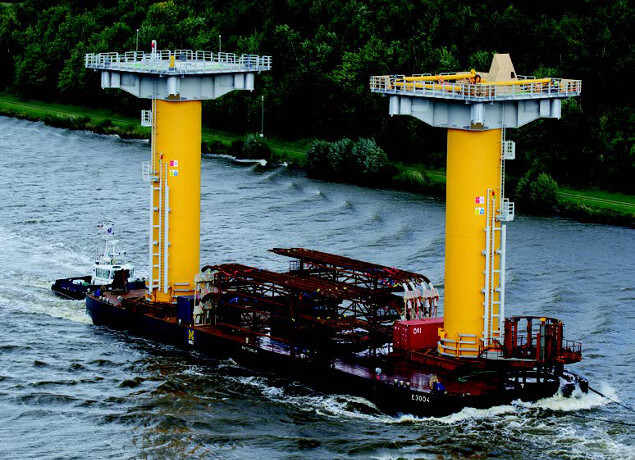
Related References
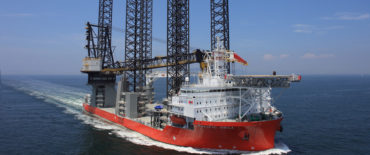
Wind Turbine Installation vessel
- Vessel type: offshore vessel
- Vessel name: Pacific Orca & Pacific Osprey
- Project number: 07086, 10073

